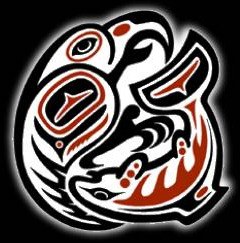by JOHN MAXWELL
For the Sequim Gazette
Editor’s note: This is the 10th in a monthly series about the Dungeness National Wildlife Refuge, past and present. — MD
When the last ice age ended some 10,000 years ago, “The People” were here. As the glacier receded, animals followed it northward and “The People” followed the animals. Through countless earthquakes and tsunamis, floods and climate changes, they were here. They were here long before the Vikings landed at L’Anse aux Meadows in Newfoundland about the year 1,000 A.D.
They were here long before there was even a Dungeness Spit — Tsi-tsa-kwick in their language — much less a Dungeness National Wildlife Refuge.
The S’Klallam people — including the Jamestown S’Klallam Tribe — are part of the Coastal Salish who claim ancestry from those post-ice age peoples. Compared to their 10,000 years, the refuge’s century is barely the blink of an eye.
Ten thousand years is older than the birth of agriculture in the Middle East and older than the pyramids in Egypt or Stonehenge and New Grange in the British Isles. What happened here in all that time? Did these First People settle in one place or did they migrate, following the game, fish and wild plants? How many earthquakes and tsunamis did they endure? During 10,000 years the climate would have fluctuated through cycles of hot and cold, wet and dry.
How were The People on the North Olympic Peninsula affected by these changes? Do they have oral traditions that might tells us? Several stories tell of a massive flood that may have been either the tsunami from the 1700 subduction earthquake, or the earlier inundation at the end of the ice age.
A look back
When we European invaders arrived, we took advantage of the earlier arrival of our diseases — measles, smallpox, whooping cough — that had devastated the local villages. In 1855 territorial Gov. Isaac Stevens coerced the S’Klallam Tribe and others into signing the Point-No-Point Treaty, in which they ceded almost all their lands, but retained hunting, fishing and gathering rights “in all the accustomed places.” In the mid-20th century, when Washington refused to honor the treaty, it was overruled by the Boldt (1974) and Rafeedie (1994) Decisions.
Then in 2007 came the commercial shellfish growers settlement between commercial shellfish growers and 17 treaty Indian tribes in western Washington.
Today Jamestown S’Klallam tribal members exercise their lawfully recognized right to fish and harvest shellfish on the spit and adjoining state tidelands. It was a tough fight, but they are used to tough fights.
In the 1870s, pressured to move to the Skokomish reservation, home of traditional enemies, they refused to move, instead clinging to life around Sequim and Dungeness bays. In 1874, under the leadership of their chief, Lord James Balch, the Jamestown people pooled their money, $500, and purchased 210 acres of land near Dungeness. This is not a reservation. They bought it.
After years of effort, they became a thriving tribe. While we whites thought the Indians would become extinct and fade away into the sunset, they are still here and flourishing.
Status and struggles
But the Jamestown struggle was not over. Since they refused to go onto the reservation, they did not have official tribal status, losing government benefits given to other tribes. Without tribal status, it was questionable whether even the Boldt Decision applied to them.
On Jan. 22, 1976, they petitioned the government for recognized tribal status. On Feb. 10, 1981, they finally gained it. Today, under the leadership of W. Ron Allen, they are one of the most economically and politically powerful tribes in the nation.
Dungeness Spit always has been an important part of their life. In 1855, the S’Klallam had two villages on Dungeness Bay or Tses-kut: Tsako west of Cline Spit and Stehlum by the mouth of the Dungeness River. In 1980, workers cleaning up Graveyard Spit discovered an antique unfinished canoe, estimated to date from the 1840s or 1850s.
Salish tribes often used ocean spits for burying their dead, sometimes placing them in canoes such as this one, raised above the ground on posts. The canoe now rests at the Jamestown cemetery.
Judging by refuge managers’ reports over the years, relations with Dungeness National Wildlife Refuge have not always been smooth. It requires a delicate balance between honoring Native treaty rights and the refuge management’s mandate to protect the wildlife.
Bird hunting is not allowed on the refuge, and seals, a traditional source of meat, are protected under the Marine Mammal Protection Act.
Even so, the Jamestown S’Klallam Tribe has shellfish harvesting operations on the tidelands adjacent to the refuge, as well as fishing in the bay.
Today the tribe and the refuge try to work together to protect both the refuge and Native treaty rights. Need I say that it requires constant communication, a large dose of trust and maybe help from a friend.
When you walk down the forest trail, you may hear his loud, deep “Craawk” echoing through the woods. Sometimes you may glimpse him floating overhead on dark, silent wings.
Raven, who always has been central to Northwest tribal beliefs, is watching over the spit and the refuge. Creator and trickster, he gave us the light, the salmon and the cedar.
From his perch in the woods his bright black eye watches all that happens, guarding the spit and all its people, both human and animal. Be careful not to cross him. Otherwise Trickster might change you into a gull or a rough-skinned newt.
John Maxwell is a historian for the Dungeness National Wildlife Refuge.



